The world champions meet again — but this time, the story is not just about rivalry. It’s about legacy, leadership, and the next blueprint for Indian cricket.
By Sarhind Times Sports Desk
Perth / New Delhi | October 19, 2025
When the first ball of the Perth ODI whistled through the Australian wind on Sunday morning, it carried more than pace — it carried history.
This was not merely another bilateral match between cricket’s fiercest rivals. It was the beginning of a new era for Indian cricket, as Rohit Sharma and Virat Kohli — two modern titans who have shared the weight of a billion hopes for over a decade — now stride into perhaps their final joint phase in the 50-over format.
Both men have retired from T20Is, both know that the 2027 World Cup may not see them together, and both seem determined to leave a blueprint of professionalism and power behind.
The Context: A Rivalry Renewed, A Legacy Extended
India and Australia meet at a time when world cricket itself is in transition.
The ODI format, once the game’s heartbeat, now fights for space in an age of leagues and shorter attention spans. Yet when these two nations clash, even the skeptics watch.
India last played in Perth in 2020, a match remembered for pace, bounce, and Kohli’s trademark cover drives that sliced through the sea breeze. Now, five years later, the script feels both familiar and different: India are the defending Asian champions; Australia, the reigning world champions.
“It’s the purest rivalry after the Ashes,” remarked former Australian captain Michael Clarke. “India bring skill, Australia bring spite — and together they bring spectacle.”
The Pitch and the Plan
The Perth Stadium pitch glistened with greenish grass on the eve of the match — a typical WACA DNA surface transplanted into modern architecture.
Fast bowlers love it; batsmen fear it until they find rhythm.
India’s bowling coach Paras Mhambrey called it “a track that rewards patience, not panic.”
Early movement was visible even during practice, forcing openers to adjust their trigger movements.
Australia announced a full-strength lineup led by Pat Cummins, with Mitchell Starc and Josh Hazlewood returning from rest. India countered with Jasprit Bumrah, Mohammed Siraj, and Kuldeep Yadav, hoping to exploit bounce with wrist spin later in the innings.
Inside the Indian Camp: Balancing Experience and Experiment
Head coach Rahul Dravid faces the delicate task of phasing in new blood without diluting the aura of India’s senior core.
With Shubman Gill, Ruturaj Gaikwad, and Tilak Varma jostling for top-order spots, this series could shape India’s medium-term ODI identity.
“The transition isn’t about replacing Rohit or Virat,” said Dravid during the pre-match press meet.
“It’s about building around their mentorship — letting youth learn by proximity.”
The captain, Rohit Sharma, echoed that sentiment.
“We’re not chasing change for the sake of it. We’re grooming successors the way we were once guided.”
The Kohli Question: Fire Still Burns
If there was any doubt about Virat Kohli’s hunger, his recent form silenced it.
In the last six ODIs, he’s averaged 71.6 with two hundreds — classic Kohli, combining control with controlled aggression.
At 36, fitness remains his hallmark. His pre-match sprints under the Perth sun drew applause even from local spectators.
“He still trains like he’s 24,” quipped fielding coach T. Dilip. “That’s the culture we’ve inherited.”
Analysts see this phase as Kohli’s pivot to mentorship — less about dominance, more about direction. He has begun guiding Gill and Varma on handling high-bounce conditions, a wisdom India lacked in earlier generations.
“If cricket were school, Kohli is the stern teacher who still tops the class,” wrote former batsman Sanjay Manjrekar in his column for Sarhind Times.
Rohit’s Reinvention: The Quiet Captain
Rohit Sharma, meanwhile, has evolved from flamboyance to focus.
Gone is the swaggering six-hitter of 2019; in his place stands a calmer strategist who reads matches like chessboards.
In practice sessions, he spent more time talking to bowlers than batting himself — a subtle sign of a captain who leads through design, not dominance.
“Rohit’s greatest skill is empathy,” said Dravid. “He knows how to make young players feel they belong.”
His tactical decision to open with Siraj instead of Bumrah in recent series paid dividends, showcasing a willingness to break patterns in search of breakthroughs.
The Australian Angle: Respect Cloaked in Rivalry
For Australia, this series is personal.
After India’s back-to-back Border–Gavaskar Trophy wins and a string of ODI triumphs, the Aussies seek to reclaim psychological dominance at home.
Steve Smith, now ODI vice-captain, was blunt:
“We’ve let India push us around too long. Perth is where it stops.”
The hosts are banking on Cameron Green’s all-round dynamism and Glenn Maxwell’s middle-order muscle to unsettle India’s rhythm.
Analysts warn, however, that Australia’s batting depth — powerful but inconsistent — remains vulnerable to spin chokeholds during middle overs.
Fans and Frenzy: A Billion Eyes, Two Time Zones
In India, pubs and living rooms buzzed from early morning as fans tuned in at dawn.
Screens lit up across Gurgaon offices, Mumbai cafes, and Kerala hostels — an unofficial holiday atmosphere.
On social media, hashtags like #IndVsAus, #KingKohli, and #MenInBlue trended within hours.
Cricket remains India’s most unifying language — and Kohli, its enduring dialect.
“It’s not just sport — it’s identity,” said 19-year-old fan Isha Nair, waving a tricolor scarf in Bengaluru.
“When Kohli bats, we forget everything else.”
Game Strategy: Between Pace and Patience
India’s key to success in Perth lies in batting time, not chasing tempo.
The bounce here rewards those who leave judiciously and punish those who flash rashly. The team plans to deploy a flexible batting order, with KL Rahul potentially batting at No. 4 and Hardik Pandya finishing.
For bowlers, the mantra is short bursts, full energy. Bumrah’s late reverse swing could be decisive once the white ball ages.
“This is a contest of attrition, not explosion,” observed former pacer Zaheer Khan on commentary.
“Whichever side manages nerves during the dull periods will dominate.”
Behind the Scenes: Analytics in Action
Modern cricket is as much about data as instinct. India’s support staff now rely on a custom-built AI-assisted “MatchEye” system, developed in collaboration with a Hyderabad start-up.
The platform analyzes frame-by-frame patterns of opposition players — grip changes, shot preferences, and fatigue points.
“We’re teaching the AI to read rhythm,” said data analyst Rishi Karthik. “It helps bowlers know when a batsman’s head drops or backlift slows.”
These insights, once whispered by intuition, now flash on iPads in real time.
The Broader Context: Cricket’s Shifting Landscape
Beyond boundaries and bouncers, this series holds geopolitical weight in cricket economics. India and Australia together account for 65% of global cricket broadcasting revenue.
Their rivalry sustains not just audiences but also the viability of the ODI format itself.
Cricket historians compare this series to the India–Pakistan duels of the 1990s, where cultural narratives met competition.
“Every time India plays Australia, the world rediscovers why 50-over cricket still matters,” said Harsha Bhogle.
Voices from the Experts
Ian Chappell:
“India’s professionalism reminds me of Australia in the early 2000s. They’ve found hunger without hostility.”
Ravi Shastri:
“We’re witnessing a golden handover. Rohit and Kohli are bridging eras — ensuring India never runs out of heroes.”
Lisa Sthalekar:
“The women’s game mirrors this rivalry now. Both boards invest heavily in parity. It’s a cultural export of competitiveness.”
The Match So Far (Live Context)
At the time of filing this report:
- India, batting first, were 221/3 after 38 overs.
- Kohli (78)* looked composed, trading aggression for timing.
- Gill (56) provided early flair before falling to Starc’s swinging yorker.
- The Australian pacers toiled under unexpected humidity; spinners tested with short boundaries.
The crowd — a mix of Indian expats and Aussie faithful — roared as every cover drive carved the air.
Even in a neutral ground like Perth, blue outnumbered yellow.
The Legacy Line: What’s at Stake
Beyond scoreboards lies sentiment.
If India win this series, it cements their dominance in all formats — symbolic closure to an era defined by two men.
If they lose, it marks the beginning of transition in earnest — the moment the baton truly passes.
For Kohli and Rohit, each run scored is less about statistics and more about testimony: that longevity in Indian cricket is still built on discipline, not luck.
“The next generation will measure themselves against these two,” said Sunil Gavaskar. “That’s the greatest legacy any cricketer can leave.”
Editorial Reflection: Beyond the Boundary
In the arc of time, every athlete faces sunset. Yet some sunsets paint the sky brighter than mornings.
For Indian cricket, this match — perhaps this entire series — feels like such twilight. Two veterans standing firm against fast winds, their partnership less about runs, more about reverence.
Perth may fade into night when the match ends, but somewhere in Mumbai, Delhi, or Ranchi, a child will watch their poise and pick up a bat.
And the cycle will begin again.
#IndvAus #Cricket #Kohli #RohitSharma #PerthODI #TeamIndia #Sports #SarhindTimes

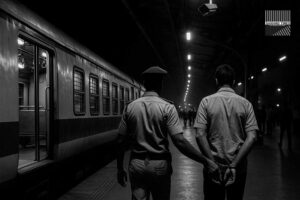

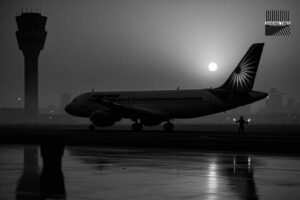
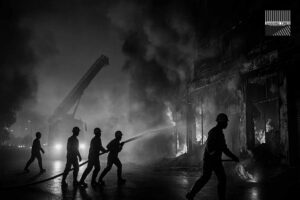














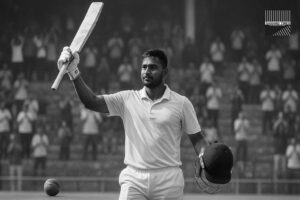




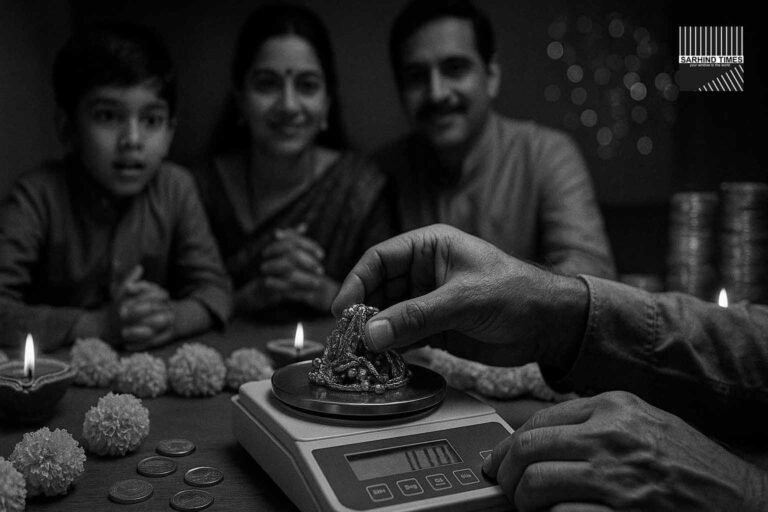
+ There are no comments
Add yours